The Great Wall of China: The World’s Longest Man-Made Wonder and a Symbol of Ancient Power
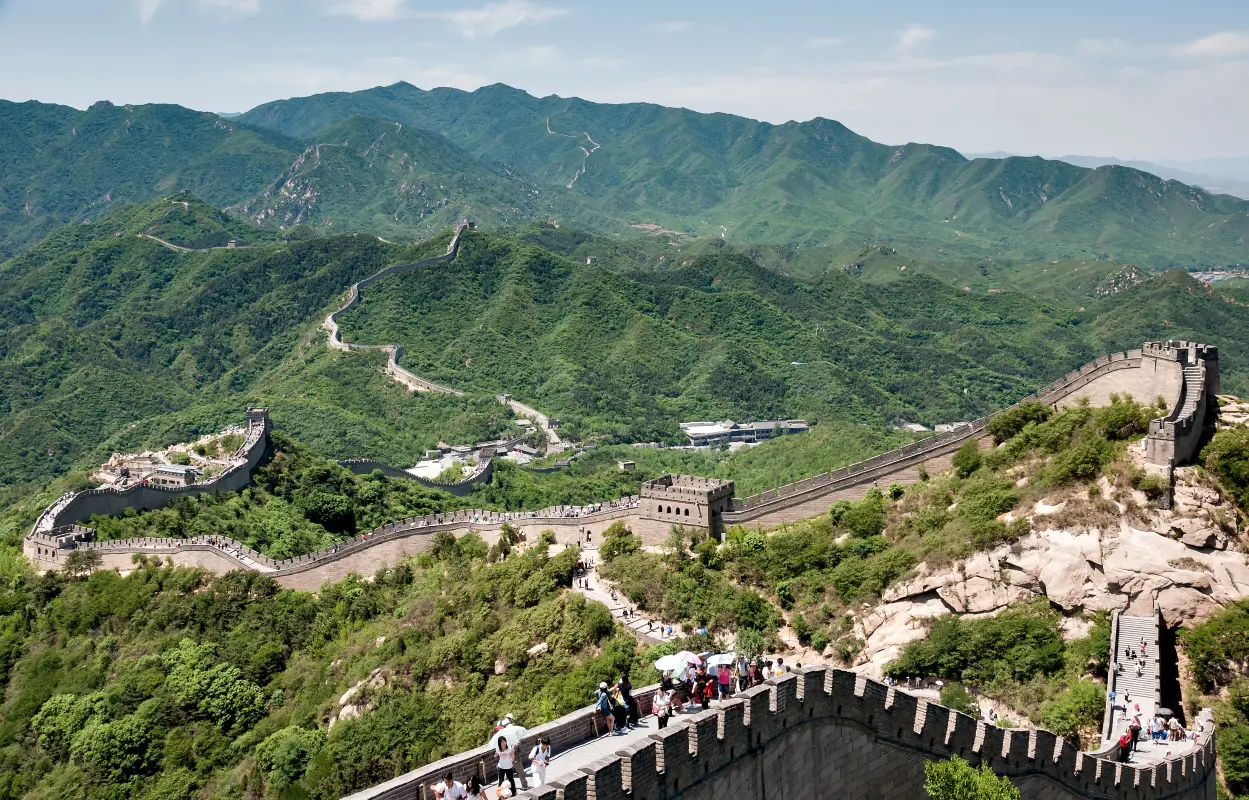
Great Wall of China, Beijing – Mutianyu section
Introduction
The Great Wall of China is one of the most extraordinary architectural achievements in human history. At over 21,000 kilometers long, it is often described as the world’s longest man-made structure. Although often mythologized as being visible from space, its true grandeur lies in its history, strategy, and cultural significance.
The origins of the wall date back to the 7th century BCE, and over time it was expanded by several dynasties, with the Qin and Ming playing the most prominent roles in its development. Built primarily as a defense against northern invaders, the wall today stands as a reminder of ancient engineering genius and China’s resilience. Today, the Great Wall stands among the most popular UNESCO World Heritage destinations, drawing countless visitors annually.
Visit Information
Location and Accessibility
- Country: China
- Provinces / States Covered:
- Beijing Municipality – (Badaling, Mutianyu, Jiankou sections)
- Hebei Province – (Jinshanling, Shanhaiguan, Huangyaguan sections)
- Tianjin Municipality – (Huangyaguan area)
- Shanxi Province – (Datong section)
- Inner Mongolia Autonomous Region – (various northern frontier walls)
- Gansu Province – (Jiayuguan, the westernmost end of the Wall)
- Districts (popular tourist sections):
- Badaling (Yanqing District, Beijing)
- Mutianyu (Huairou District, Beijing)
- Jinshanling (Luanping County, Hebei Province)
- Shanhaiguan (Qinhuangdao City, Hebei Province)
- Nearest Major City: Beijing (most visited starting point for tourists)
- Accessibility: Easily accessible from Beijing by car, tourist buses, and train services. Other sections (like Shanhaiguan, Jinshanling, Jiayuguan) are accessible by long-distance trains and highways.
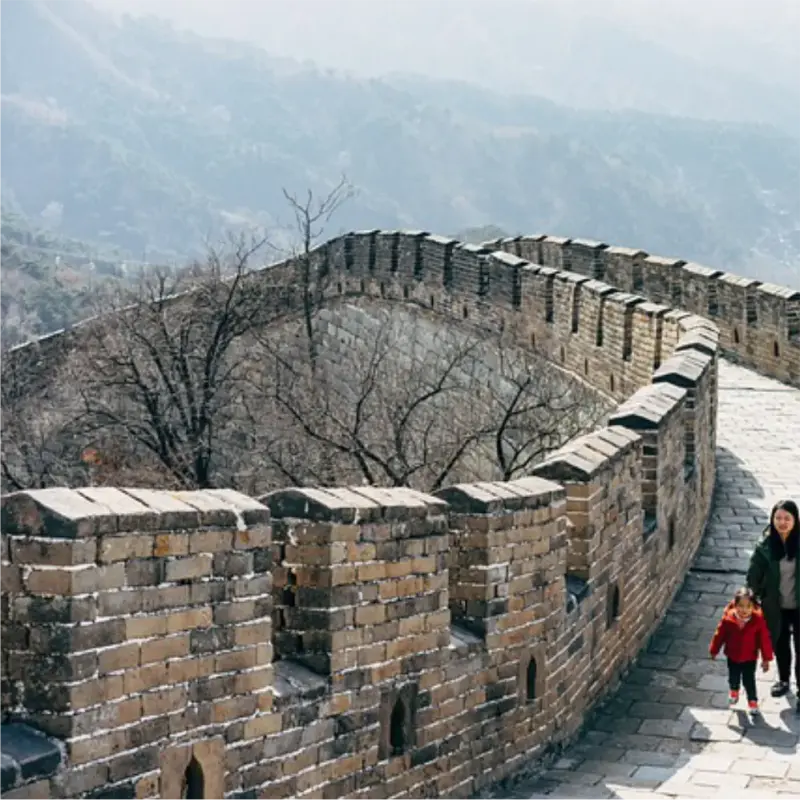
Badaling
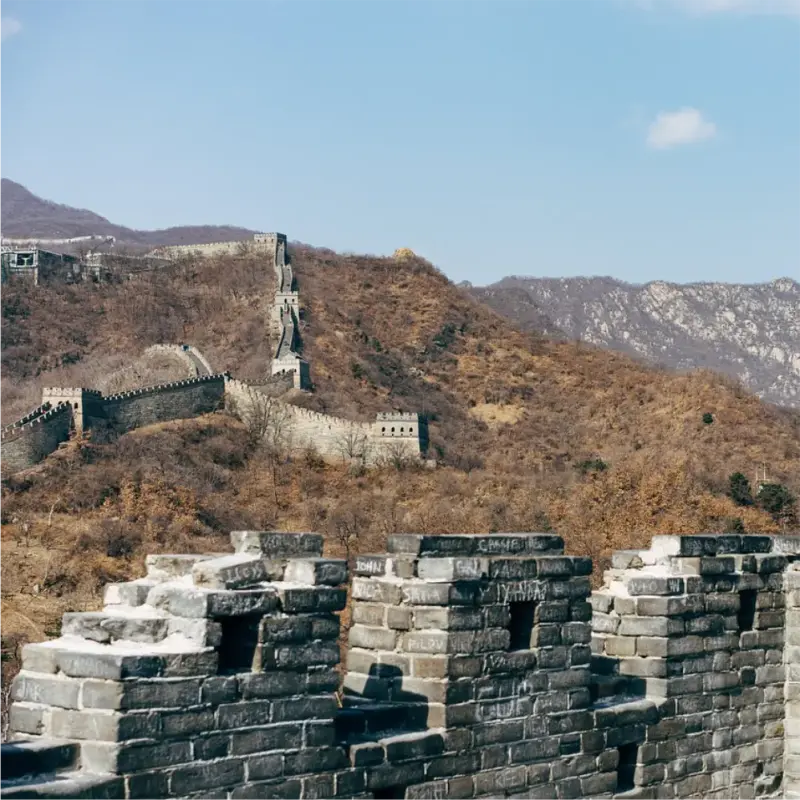
Mutianyu
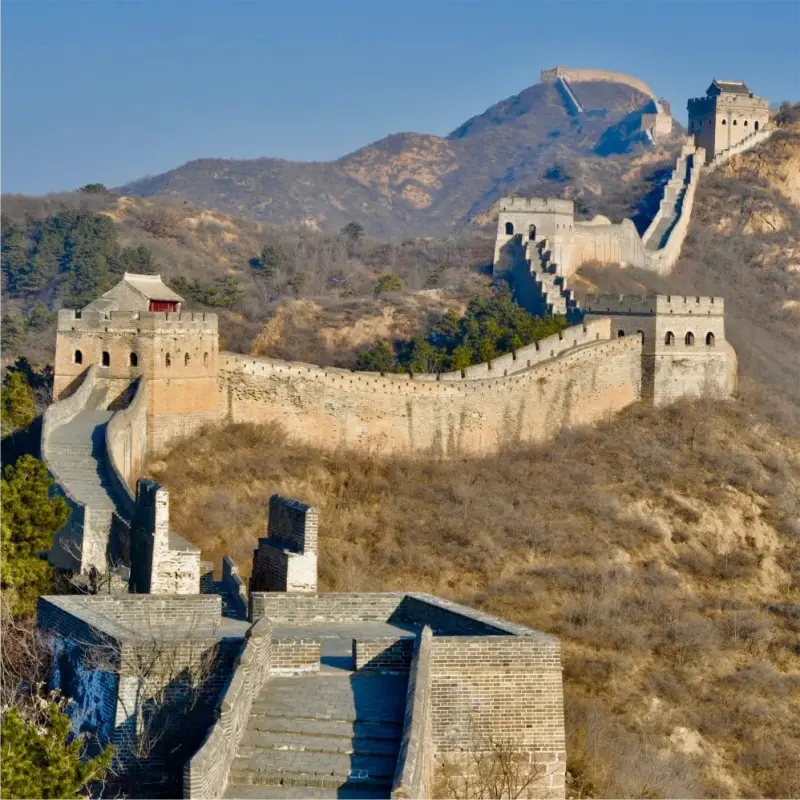
Jinshanling
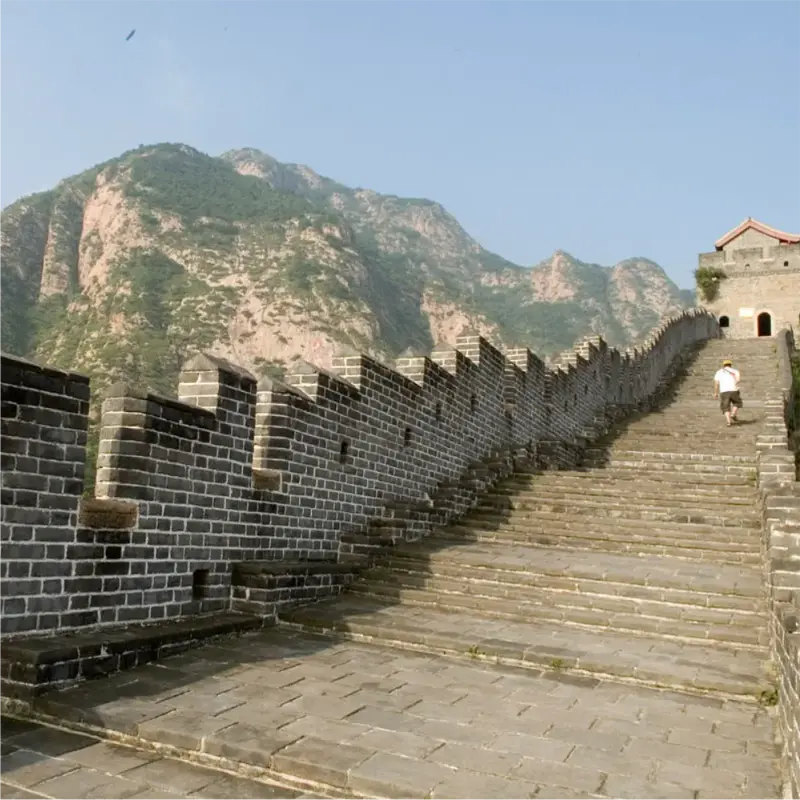
Shanhaiguan
Tickets and Admission
- Ticket Price: Around 40-60 RMB per person (varies by section).
- Time: 7:30 AM to 5:30 PM (varies seasonally).
- Popular sections: Badaling (most crowded), Mutianyu (scenic and less crowded), Jiankou (adventurous hiking).
Nearby Attractions
- Forbidden City (Beijing)
- Summer Palace
- Temple of Heaven
- Silk Road Town (near the western sections of the wall)
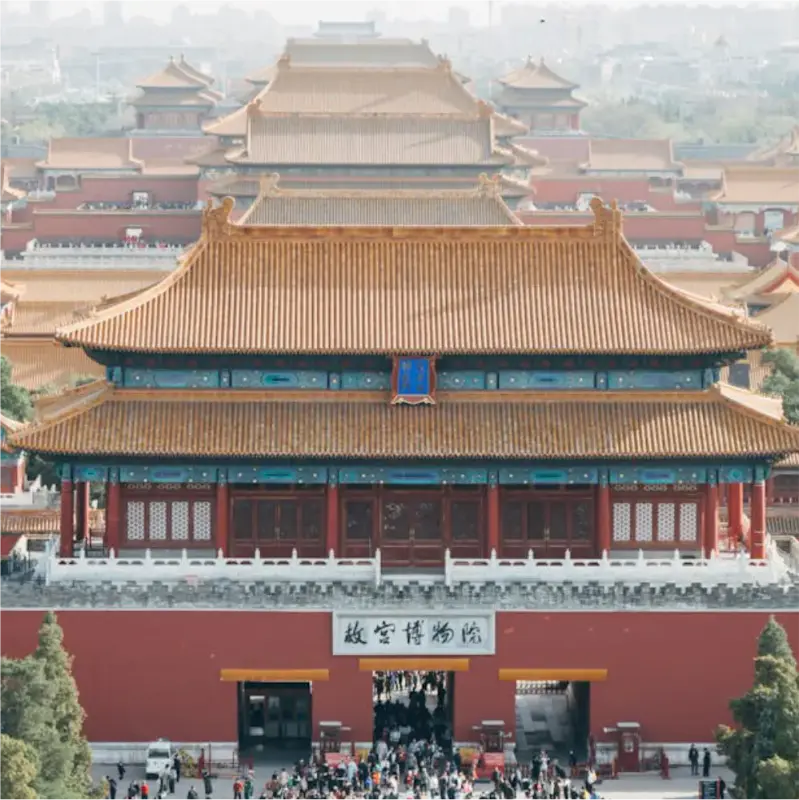
Forbidden City (Beijing)
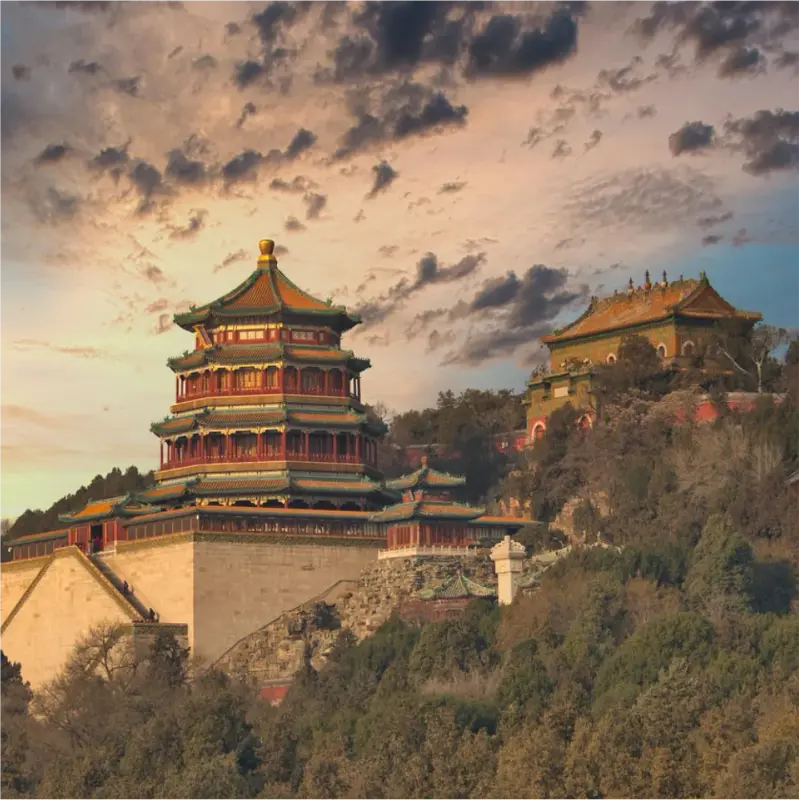
Summer Palace
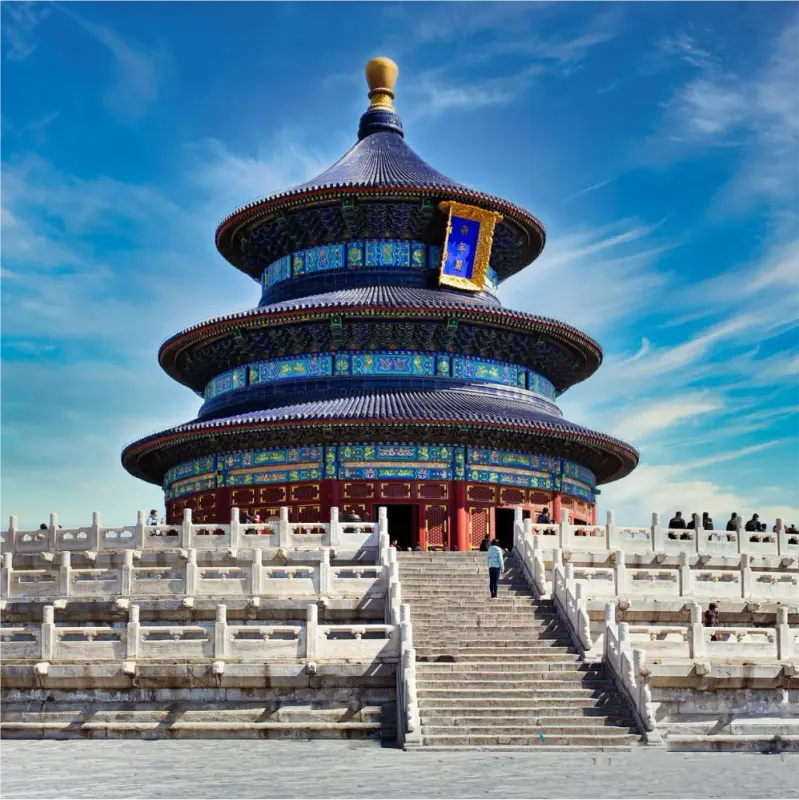
Temple of Heaven
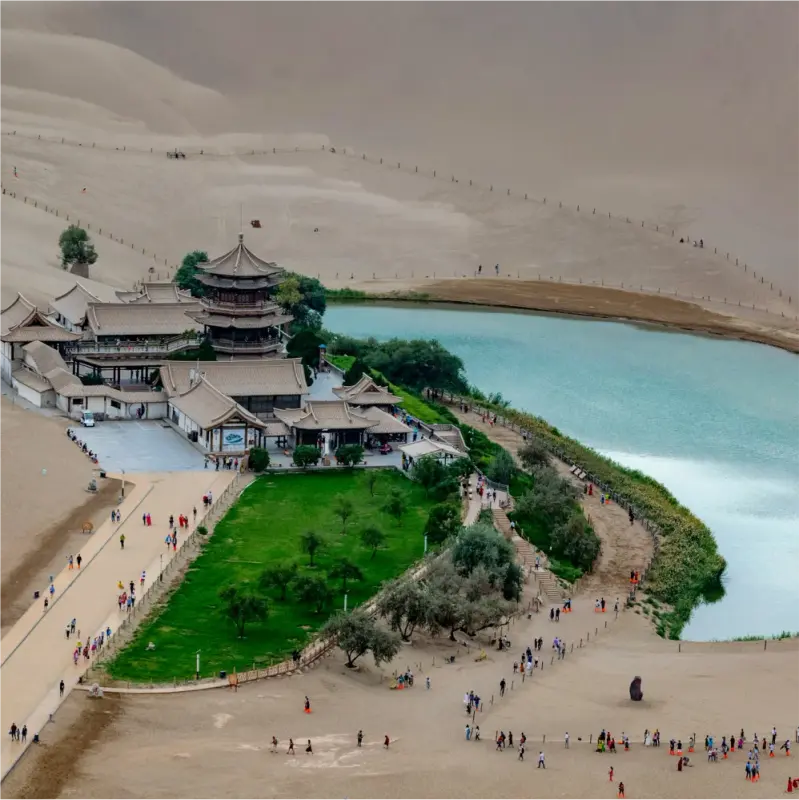
Silk Road Town (Dunhuang)
Travel Tips & Recommendations
Best Time to Visit
- Spring (April–June) and autumn (September–October) are the best seasons.
- Avoid mid-summer (too hot) and winter (slippery snow).
Photography Tips
- Sunrise and sunset photos offer breathtaking views.
- Carry a drone only if permitted (strict regulations near Beijing).
- Using a wide-angle lens helps capture the vast panoramic beauty of the Wall.
Safety & Local Customs
- Arrive early to avoid crowds.
- Wear comfortable shoes for hiking.
- Respect local customs and regulations.
Accommodation and Food Tips
- Stay in Beijing for easy access.
- Local specialties: Peking duck, dumplings, noodles.
- Travelers will come across cozy cafés and dining spots close to Mutianyu and Badaling.
History and Background
Origins and Establishment
The Great Wall originated in the 7th century BCE when individual Chinese states began building fortifications to protect their territories. After the unification of China in 221 BCE, Emperor Qin Shi Huang consolidated these walls into a grand structure, laying the foundation for what later became the Great Wall.
Construction Timeline
- 7th–4th centuries BCE: Small regional walls by various states.
- 221–206 BCE (Qin Dynasty): First unification and large-scale construction under Emperor Qin Shi Huang.
- Under the Han era, expansions carried the Wall into western regions to safeguard Silk Road trade.
- In the period of the Northern and Southern Dynasties, reinforcement and repair activities were undertaken.
- Ming Dynasty (1368–1644 CE): Major reconstruction with stone and brick, creating the iconic wall we see today.
Historical Events and Stories
- During the Han Dynasty, the wall protected traders on the Silk Road.
- In the 13th century, the wall repeatedly resisted Mongol invasions.
- Under the Ming Dynasty, the wall reached its peak strength, reinforced with watchtowers, forts, and sophisticated defense systems.
Legends and Myths
One of the most famous legends is that of Meng Jiangnu, whose husband died while building the wall. Her endless mourning and tears are believed to have caused a section of the wall to collapse. This story symbolizes the human suffering behind this monumental project.
Architecture and Design
Architectural Style
The architecture of the Great Wall varies by era and location. Early walls were made of tamped earth and wood, while the Ming Dynasty used stone and brick for durability. Running through mountains, deserts, and plains, the wall seamlessly integrates with the natural landscape, creating breathtaking views.
Materials and Techniques
- Early walls: compacted clay, reeds, and wood.
- Ming era: bricks, granite, and lime mortar.
- Techniques: archery materials, stone foundations, and battlefield leveling.
Gardens and Surroundings
Sections such as Mutianyu and Badaling wind through lush mountains and forests, making them not only historical sites but also scenic hiking trails for modern tourists.
Artistic Elements
Ming-era sections exhibit artistry in addition to utility, including carved stone steps, decorative bricks, and intricately designed watchtowers, which blend defense with aesthetics.
Cultural and Spiritual Significance
Religious / Spiritual Significance
Although not built as a religious monument, the Great Wall embodies the spirit, endurance, and unity of Chinese culture. It is often viewed as a cultural symbol of perseverance and the shared strength of the nation.
Cultural Relevance
The wall is deeply rooted in Chinese culture. It has inspired countless poems, paintings, and folk tales, symbolizing not only defense but also national pride and cultural heritage.
Influence on Art and Literature
Poets have likened the wall to a "dragon on earth", and it appears in countless films, books, and works of art around the world.
Fun Facts and Trivia
- With a total length of about 21,196 kilometers, it holds the record as the world’s longest wall.
- UNESCO: Declared a World Heritage Site in 1987.
- Not visible from space: Contrary to popular belief, astronauts confirm that it cannot be seen with the naked eye from the moon.
- Bricks as money: In ancient times, stealing bricks from the wall was punishable, as they were considered as valuable as currency.
- Nicknamed “Long Cemetery”: Because many workers died during construction.
Impact and Legacy
Global Recognition
Recognized by UNESCO as a World Heritage Site in 1987, the Wall is also celebrated as one of the New Seven Wonders.
Influence on Modern Architecture
The Wall inspired later fortifications and remains a benchmark for large-scale defense systems worldwide.
Legacy & Preservation
Despite erosion and damage, preservation efforts continue to protect this monumental heritage. It remains a symbol of national identity and global cultural treasure.
Conclusion
The Great Wall of China is more than a fortification; it is a living testament to human determination, unity, and cultural heritage. For travelers, it offers an unparalleled combination of history, architecture, and scenic beauty — making it a must-visit destination.

.webp)

